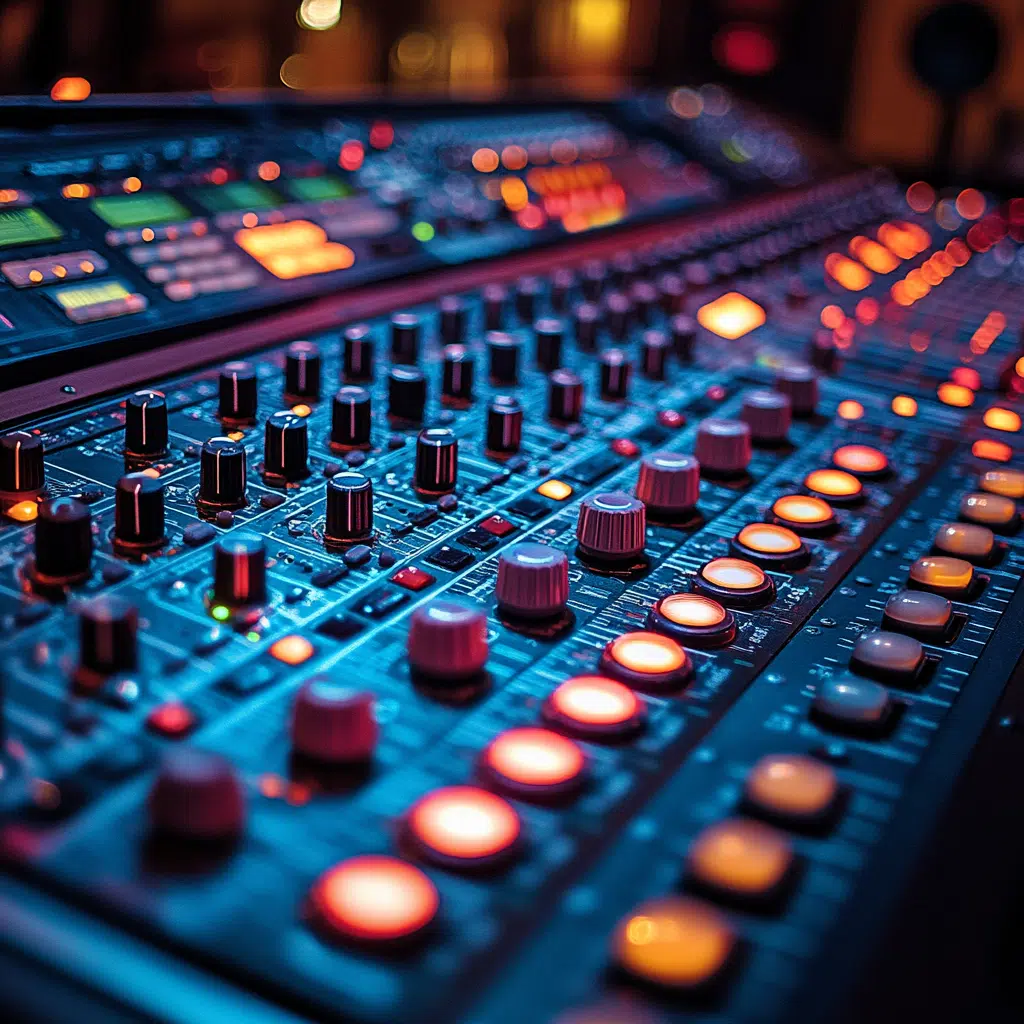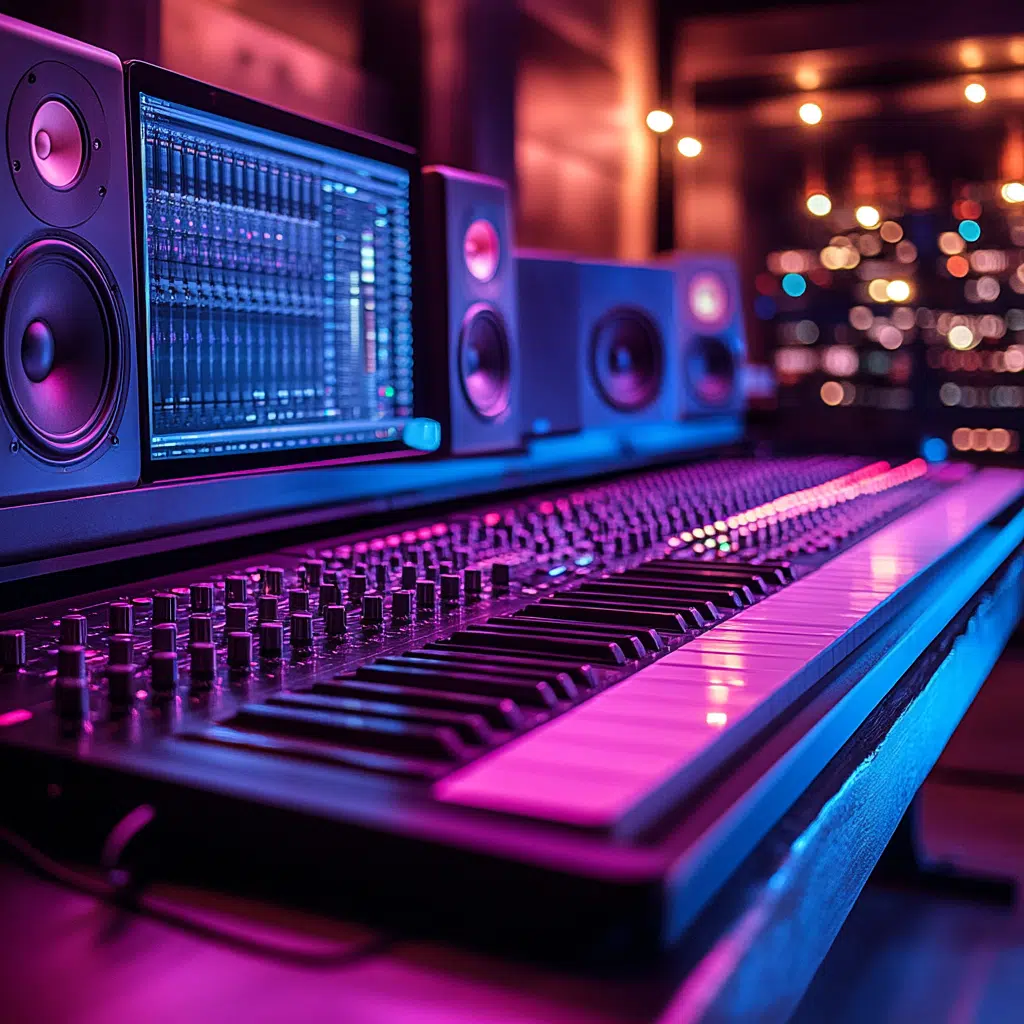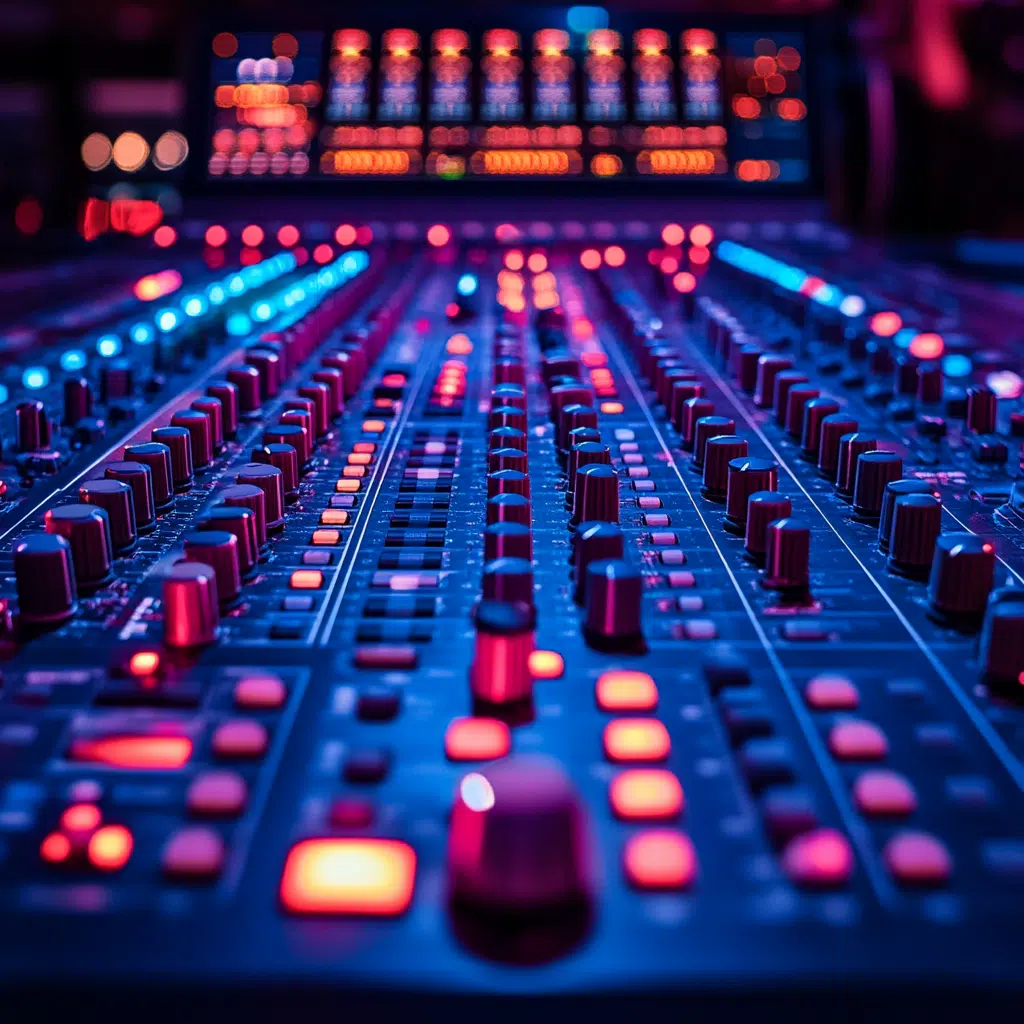Audio post-production weaves magic into our visual narratives, heightening stories we share across films, TV, and multimedia. With the explosive rise of platforms demanding exceptional soundscapes, skillful navigation of the intricate layers of audio post-production is paramount for filmmakers and producers who are eager to stay ahead. So, buckle up, because we’re diving into the essence of what makes online audio post-production a game changer for the audiovisual world.
Understanding Online Audio Post Production
Online Audio Post Production is the craft of bringing depth to a story through sound. This crucial process involves refining audio elements, integrating sound effects, and ensuring that the dialogue resonates in perfect harmony with the visual cues. Imagine early Spielberg films—their suspense and emotion were defined as much by sound design as by visual storytelling. It’s this balance that transforms a project from average to exceptional.
The significance of soundtracks can’t be overstated. Consider the chilling effects crafted in productions like “Stranger Things,” where audio immerses viewers into an otherworldly saga. With online audio post-production, we’re talking about a comprehensive journey from initial editing through the final mix—crafting something beyond the ordinary. For those who dream of impactful scenes and flawless narratives, understanding these audio cues isn’t a choice; it’s a vital step to create memorable content that stands tall.
Essential Tools and Software for Online Audio Post Production
Embarking on this auditory adventure necessitates mastering key software. First up, Avid Pro Tools—deemed the standard bearer in the industry. It provides the versatility required to edit complex audio layers seamlessly. Similarly, Logic Pro X offers artists a robust set of tools to craft precise soundscapes and mix music tracks fluidly. Then there’s Adobe Audition, which offers a perfect blend of creative flair and intricate editing.
Companies like iZotope redefine audio refinement through noise reduction and sound enhancement, making them invaluable when weaving subtle ambiances or punchy audio effects. Fascinatingly, AI leaps further ahead. Platforms such as LANDR are pioneering in automated mixing and mastering, ensuring your audio post-production is continuously refined for peak clarity. Experts argue that adopting these tools lays down a formidable base for future projects, starting you on a path of mastery without the steep learning curve associated with traditional techniques.
| Aspect | Description |
|---|---|
| Definition | Online audio post production involves refining and enhancing audio elements through editing, re-recording, mixing, and adding sound effects. |
| Importance of Credits | Building a portfolio with experience is crucial for getting opportunities. Starting with small projects like short films and YouTube videos is common. |
| Budget Consideration | Typically, audio post-production costs are 5%-10% of the total film budget. For a $50,000 pre-audio film budget, expect to spend $3,000-$5,000. |
| Time Investment | A general rule is “one hour per finished minute” of audio, though complex projects can require up to 20 hours per minute for dialogue post-production. |
| Applications | Utilized in films, TV shows, animations, YouTube videos, podcasts, and multimedia projects. |
| Key Tasks | Tasks include dialogue editing, Foley work, sound design, ADR (Automated Dialogue Replacement), and final mixing (including stereo and surround formats like Dolby Atmos). |
| Technology Used | Digital Audio Workstations (DAWs) like Pro Tools, Logic Pro, and specialized plugins for sound effects and mixing. |
| Benefits | Enhances the storytelling experience, improves audience engagement, and ensures audio quality meets industry standards. |
| Online Platforms | Platforms such as SoundBetter, Upwork, and Fiverr offer freelance audio post-production services. |
Key Techniques to Enhance Your Audio Post Production Skills
Ready to arm yourself with some serious skills? Let’s dive into techniques that will level up your sound game:
Exploring Dolby Atmos and Immersive Audio Techniques
If you haven’t heard the buzz around Dolby Atmos, you’re missing what’s driving sound design into the future. Representatives of a quantum leap from stereo and surround mixes, Atmos allows designers to craft environments in which sound truly envelops the audience. Imagine how “Mad Max: Fury Road” intensified its adrenaline rush through spatial audio, placing viewers in the heart of the action to stunning effect.
Dolby Atmos mixing toronto is a place to start for those eager to craft immersive environments. Here, sound travels and moves organically, floating around and over the audience, creating an experience that’s no longer defined by just the screen. The implications for storytelling are vast—providing creatives the ability to engage listeners from unique perspectives, and wrapping them snugly in the narrative’s heartbeats and whispers.
Online Audio Post Production Workshops and Certifications
Want to get your hands dirty and dive deeper into audio pools? Several educational platforms like Berklee College of Music offer workshops tailored to honing your skills. These courses guide you through the steps To buying a house with audio—a complete journey from rudimentary Mbox setups to full-fledged project environments.
But let’s not overlook other treasures. LinkedIn Learning empowers learners with tutorials crafted by stalwarts of audio post-production. These workshops forge pathways toward certification. So, while you practice your sweet mix on animated anime from the ’80s, you’re also carving your own path to mastery. Remember, engaging with real-world examples ensures the application of techniques becomes second nature.
Challenges and Solutions in Online Audio Post Production
Treading through the swamps of audio post-production can sometimes feel like you’re lost in area code 240—unfamiliar and dense with potential missteps. Typical hurdles include managing complex layers of sound, ensuring dialogue clarity amid chaotic soundscapes, and running against deadlines. Yet, solace lies in learning from seasoned industry veterans who have battled through—and overcome—these challenges.
An insightful approach? Interviewing experts who’ve tread the same sod. Their strategies reveal methods to tackle every nuance. Consider setting realistic timelines or opting for remote sound design services; each option empowers one to adapt and overcome, making the arduous task far less intimidating.
Innovative Careers in Online Audio Post Production
If you’re considering donning the mantle of a sound guru, rest assured, the world is as vibrant as ever. Icons like Gary Rydstrom crafted formidable legacies by weaving creativity with technical finesse. From brilliant sound editors to meticulous re-recording maestros, audio post-production careers cater to those with a passion for stirring untold tales.
Moreover, the industry is more than just a cacophony of sounds. It’s where one combines art with science—a medium that turns every audio enthusiast into a storyteller. Remote music mixing services have opened avenues globally, and with projects growing remotely, the possibilities are expansive—already you can feel the spark. It’s time to transform that passion into action.
The Future of Online Audio Post Production
As you peer into the vortex of future, technologies like virtual reality (VR) and augmented reality (AR) shimmer with promise. These are sculpting an auditory frontier, where immersive storytelling transports audiences into universes yet unseen and tape unseen. As online audio post-production professionals, you’re poised to lead the charge into an auditory experience that’s more vivid and resonant than ever before.
In this vibrant scene, reshaped by technological marvels, audio excellence surges forward. By mastering state-of-the-art tools, you position yourself to seamlessly surf the avant-garde waves driving this transformation. Mastering online audio post-production shapes you into an industry adept, adeptly steering through story soundscapes that foresight doesn’t just expect, but awaits.
Online Audio Post Production: Fun Trivia and Interesting Facts
Cultural Influences and Unexpected Origins
When you’re diving into the world of online audio post production, it’s fascinating to consider the cultural influences that have shaped modern soundtracks. For instance, the experimental sounds in anime From The 80s have had a surprising, lasting impact on audio post production techniques used today. These early anime works pushed boundaries with their vibrant audio landscapes, which continue to inspire audio engineers and composers. Isn’t it curious how these animations from decades ago still echo through today’s productions?
Unlikely Connections
Sound design can sneak into the most unexpected places, including everyday locations like a social security office in Tulsa. Architects and designers there might overlook acoustic considerations, but the need for proper sound balancing in such environments isn’t much different from mixing soundtracks for films! The controlled sound environment of any office space can parallel the mixing studios, where whispering voices, muted footsteps, and even the rustle of paper can become critical components of realistic soundscapes.
Financial Insights and Sound Investments
Swinging from the world of detailed audio adjustments to the complexities of funding, did you know that understanding financial elements—like the NJ sales tax rate—can( be crucial for any indie filmmaker budgeting an online audio post production project? Small financial oversights can lead to larger budgetary woes, affecting everything from equipment purchases to sound engineer hires. While taxes might not seem glamorous, understanding them can be a game-changer in keeping any production on track.
Each piece of trivia not only spices up our understanding but serves as a reminder of how audio production is interconnected with wildly varied elements of culture, architecture, and even economics. As you journey through online audio post production, these nuggets of knowledge might inspire you to think beyond the soundboard.
How do I get started in audio post-production?
To get started in audio post-production, begin accumulating credits by working on small-scale projects such as short films, YouTube videos, or animation projects. Building experience early on is crucial, so seek out opportunities that allow you to collaborate with others and refine your skills. Networking with filmmakers and participating in workshops or classes can also help you break into the industry.
What is audio post-production?
Audio post-production involves refining and enhancing the audio elements of a recording or production. This can include tasks like editing, re-recording, mixing, and adding sound effects to create a polished and cohesive audio experience that complements the visual elements of a film or multimedia project.
How much does post-production audio cost?
Post-production audio typically costs around 5% to 10% of a film’s total budget. For instance, if the production costs $50,000 before audio, expect to pay about $3,000 to $5,000 on post-sound. This percentage covers all the necessary audio enchancements needed to finalize the soundscape of the project.
How long does audio post-production take?
The duration of audio post-production can vary, but a common rule of thumb is “one hour per finished minute” of the project. However, for more complex projects or big-budget TV shows, dialogue editing and post-production may take significantly longer, sometimes up to 20 hours for each finished minute, due to the intricate nature of high-quality sound design.
How much does sound post production pay?
Sound post-production salaries can vary widely depending on experience, location, and the scale of projects. Entry-level positions might earn around $30,000 annually, while experienced sound designers and mixers working on high-profile films or TV shows can make upwards of $100,000 a year. It’s essential to build a strong portfolio to command higher rates in the industry.
How much do audio productions make?
Earnings in audio production depend on factors like experience, project scale, and location. Freelancers might charge per project or hour, with rates varying accordingly. Established professionals can earn a substantial income from high-profile projects, while beginners generally start at lower rates and gradually increase their earnings as they gain experience and reputation.
What are the three phases of audio production?
The three phases of audio production are pre-production, production, and post-production. Pre-production involves planning and preparing for the sound recording process. Production is where the actual recording happens, capturing the audio elements needed for the project. Post-production involves editing, mixing, and enhancing these audio elements to create the final sound.
Is audio production easy?
Audio production isn’t necessarily easy, especially if you don’t have prior experience. It requires a keen ear for detail, technical skills, and creativity. However, with practice and dedication, you can learn the ropes. Many people find it rewarding because it blends art and technology, allowing for uniquely creative expression.
What is the difference between a producer and a Post Producer?
A producer is responsible for overseeing various aspects of the film or music production, from budgeting to creative decisions. In contrast, a post producer specifically manages the post-production phase, ensuring that the final audio and visual elements meet the project’s goals and deadlines. They handle tasks like editing, sound design, and finalizing the project for distribution.
Is post-production expensive?
Post-production can be expensive depending on the project’s complexity and professional services required. Audio post-production, for example, could be 5% to 10% of a film’s budget. While costs can add up, investing in quality post-production is crucial to achieving a polished and professional final product that meets industry standards.
How much does a producer cost for one song?
The cost of hiring a producer for one song can vary widely. It generally ranges from a few hundred to several thousand dollars, depending on the producer’s experience, the complexity of the song, and the artist’s budget. Renowned producers with a strong track record might charge premium rates, while newcomers may offer more affordable options.
How much does a new sound post cost?
The cost of a new sound post can range based on the scope and demands of the project. For a film, it might cost between $3,000 and $5,000, especially if you’re budgeting the post-sound to be around 5% to 10% of the total production costs. Always consider what elements need sound design, mixing, and final editing when estimating these costs.
What are the basics of audio post-production?
The basics of audio post-production involve editing the recorded audio tracks, mixing them together to ensure balance and clarity, and adding sound effects or music to enhance the storytelling. It also includes noise reduction and syncing audio with visual elements to create a seamless and engaging final product.
How do you get into post-production sound?
To get into post-production sound, start by gaining experience with small projects, like student films or online videos, which will help you build a portfolio. Learning the software used in the industry and understanding the principles of sound design can also be beneficial. Networking with industry professionals and seeking mentorship can provide valuable opportunities to break into the field.
What is the difference between audio production and post-production?
Audio production focuses on creating sounds, including recording music, dialogue, or effects, whereas post-production involves editing and refining these sounds once the recording phase is complete. Post-production enhances, syncs, and blends all audio elements to ensure they complement the visual components and narrative structure of a project.
How do I start a career in audio production?
Starting a career in audio production involves building experience through internships or entry-level positions at recording studios or media companies. This can help you learn industry practices and foster networking opportunities. Enhancing your technical skills with relevant software and equipment, along with building a strong portfolio, will increase your chances of success.
How do I start learning audio production?
To start learning audio production, it’s best to get hands-on experience with the tools and software used in the industry. Many online courses and tutorials are available for popular programs like Pro Tools and Logic Pro. Understanding the principles of sound design and mixing through practical projects will help build your competence and confidence.
How do I start a post-production career?
A post-production career can begin with specializing in specific roles such as editing, sound design, or visual effects. Work on small projects to build skills and a credible portfolio. Seek out internships or entry-level roles within production companies or post-production studios, where learning from experienced professionals will be beneficial.
How do you become a post-production producer?
Becoming a post-production producer involves gaining experience in various post-production roles, like editing and sound design, to understand the workflow and technical requirements. Building strong project management and leadership skills is crucial, as is networking in the industry to discover opportunities and make connections with potential collaborators.



